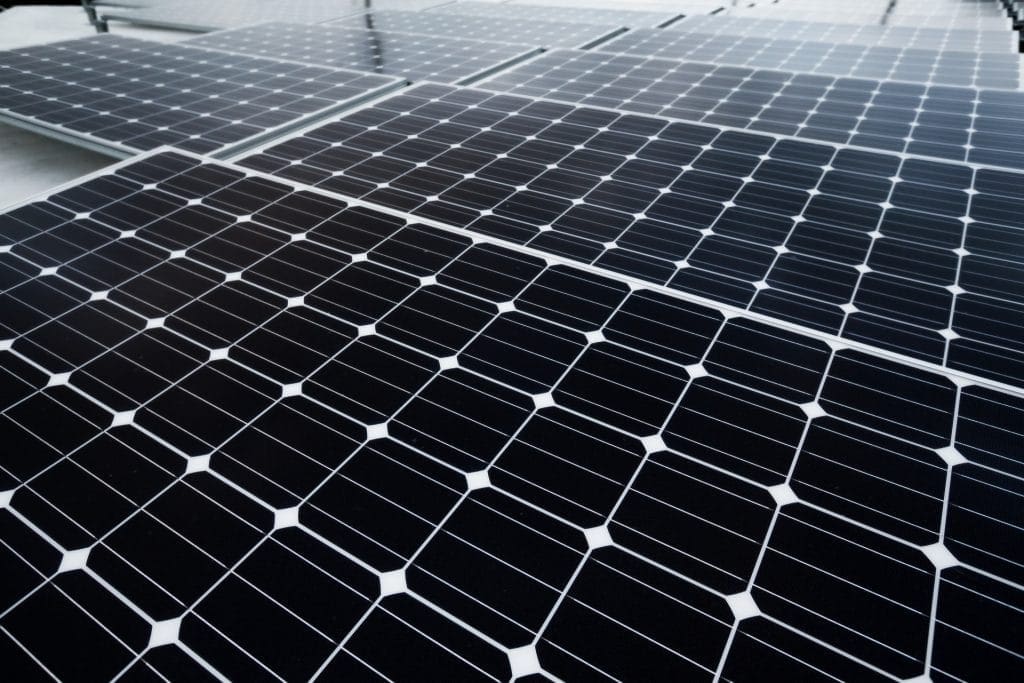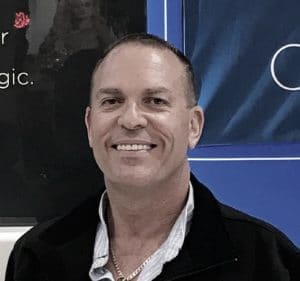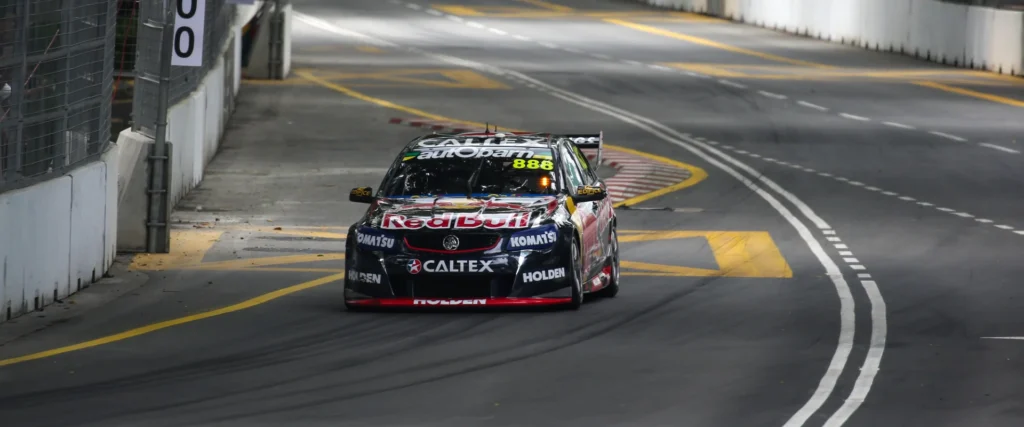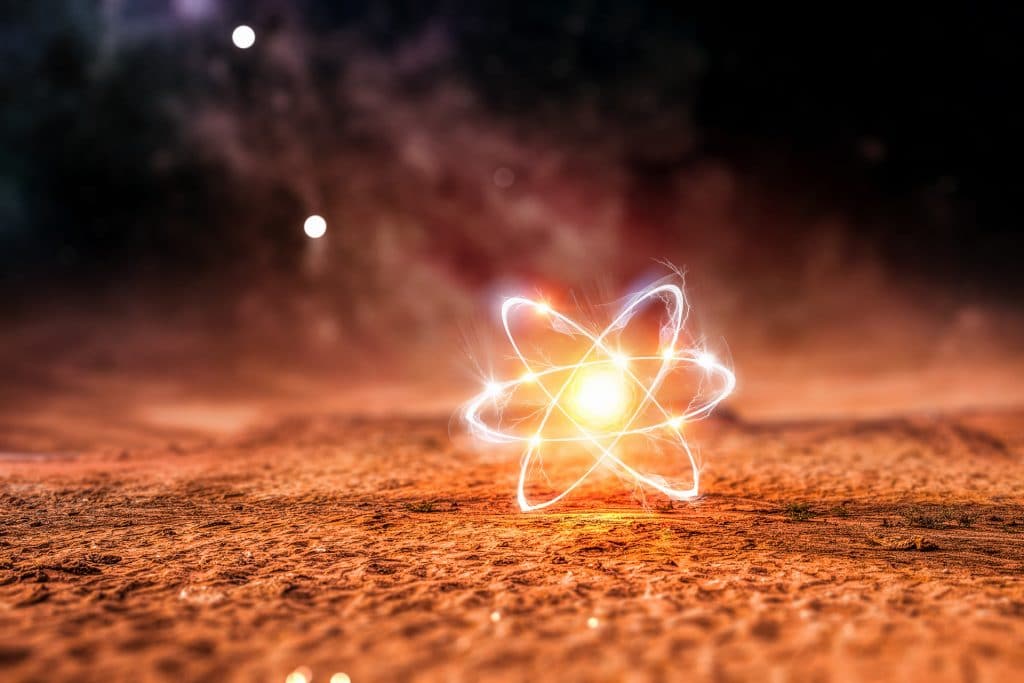Solar power is a form of renewable energy generation that is becoming increasingly common all over the world.
In the past, solar power was only used only in places where there was a lot of bright sunlight throughout the day, but modern solar panels are far better at picking up ambient light, which means that they can be used to generate electricity even in places where it is a little more cloudy and dull throughout the year.
Lets take a closer look at how solar panels work.
How is solar power generated?
Solar power is generated using photovoltaic (PV) cells. These cells convert sunlight to electricity in the form of direct current (DC) which is then passed through an inverter that turns the DC electricity into alternating current (AC) electricity. AC is what’s used to power electrical lights and other household appliances.
If there are excessive reserves of solar power generated you are able to feed it back into the grid for financial return.

That’s an overview of the ‘high level’ of how solar power works, but what about how the panels themselves generate electricity? The answer is surprisingly ingenious.
The sun acts as a natural nuclear reactor, and as the reactions take place inside the Sun, energy is released. That energy takes the form of photons, and those photons travel out through space in all directions.
The earth is quite close (in terms of the scale of the universe) to the Sun, and the photons move really fast. They travel the 93 million miles from the Sun to our planet in only 8.5 minutes!
If we were able to harness all of the power that reaches the Earth, then the solar energy from the sun bombarding Earth over the course of an hour could satisfy the current global energy requirements for a year. Unfortunately, not all of the solar energy actually hits the ground, and the energy that does reach the earth is not harnessed with 100% efficiency.
We can still generate a huge amount of energy with solar power. According to the International Energy Agency, solar power is now the fastest growing source of power in the world.
Getting back to how solar panels work
So how do solar panels turn photons into electricity? Well, solar panels are made from silicon, which is a semiconductor. Each solar panel is a sandwich, with one side being made from silicon and tainted with other metals to make it negatively charged. The other side is tainted with metals to make it positively charged.
When the photons hit a cell, they excite some of the electrons, breaking them loose from the atoms that they were attached to. The electrons will then flow to the other side of the cell, through conductors that join the positive and negative sides. This is how electrical current is generated.
Typically, a home would have a set of solar cells joined together to make a solar panel, and multiple panels can be linked together to create a solar array. When several panels are connected together, they can generate a fairly large amount of electricity.

Photovoltaic panels generate DC electricity because the electrons move from one direction around a circuit from the negative side, through the thing that they are powering (such as a light bulb) and then through to the positive side.
With AC current, electrons move in both directions – a bit like a cylinder in an engine. The electrons are pushed and pulled at the same time. This makes is easier to send AC electricity over long distances, which is why it is so frequently used in electrical grids and in powering our homes.
To make use of the DC current being generated by the solar panels, we need a way to convert it into AC current. This is where solar inverters are used.
Lets talk solar inverters
Solar inverters take the DC electricity that the array made, and then use it to make AC energy.
They also perform some other important functions, including offering statistics on the amount of power generated and also providing ground fault protection.
Ground fault protection is a safety feature that protects the system and ensures that the supply is ‘grounded’. This means electrical leaks run off safely into the ground, instead of potentially electrocuting people.
In the early days, systems relied on central inverters, but more recently micro inverters have surfaced. These optimize the supply for each individual solar panel, rather than serving the entire system at once.
This is an important feature because it enables every panel to perform at its maximum potential. With a central inverter, if there’s one panel that isn’t performing well either because it is dirty, or because it is suddenly shaded by an overgrowing plant then the performance of the entire array would be dragged down. A micro-inverter would simply produce less AC from that one panel, but the other panels will perform at their own individual potentials.
How long do solar panels last?
As a general rule, industry leading solar panels made from good quality components can last at least 25 years if properly maintained.
They do lose efficiency over time, as they suffer degradation from their ongoing exposure to the sun and outdoor weather.
Keep in mind, solar panels are more efficient now than ever before, and the cost to generate solar power is falling year on year. If you had been putting off investing in solar power because of fear of the price, then now is a good time to get involved.
Quality solar panel manufacturers servicing the Australian market include LG Solar, Canadian Solar. JA Solar and Q Cells.
Are solar panels worth it?
The best benefit comes if you can use the generated power to cover your own electricity needs, but if you’re at work during the day when your panels are at their most efficient, you can still benefit from a grid-linked system.
With a grid-tied photovoltaic system, during peak daylight hours your system will produce energy and feed it back into the grid for other people (or businesses) to use. You will then get credit for that energy, which will be taken off your electricity bill. Over time, the solar panels will pay for themselves and then start to save you money.
Remember, standard electricity prices are increasing, so you are now in a position where you could stand to save a lot of money by taking advantage of a local solar installation and if you want to future-proof your home, then getting at least partly ‘off grid’ is a good option.
As a general rule of thumb, if your monthly electricity bill is more than $100, you will benefit from the cost savings that solar can offer, assuming your property is a good candidate for solar panels to be fitted.
In terms of aesthetics, fewer people are objecting because of ‘how the panels look’. There is a good chance that if you were one of the first in your area to get solar panels fitted, that you may ‘start a trend’ and get your curious neighbours asking you about them.
How many solar panels do i need?
Well, that depends on where in the world you are, the amount of daylight that you get, and how much unshaded space you have. Additionally, if your roof is obscured by another tall building, then even in a bright and sunny part of the world you’re not going to get a huge amount of power.
If you live out in a field and you have an unobstructed roof, then you’ll get much more efficient generation.
Solar panel system sizes are measured in kilowatts and are dependent on where you live, which direction your roof faces, and how clear your access is to the sun.
Taking this into account, it’s possible to calculate how many solar panels you need by multiplying your household’s hourly energy requirement by the peak sunlight hours for your area and dividing that by a panel’s wattage.
Each kilowatt of your solar panel system will produce between 3 and 5 kWh of clean, renewable energy per day.
Tips for solar panel installation
It is easy for the average installer to fit solar panels onto a roof made from composite or asphalt shingle, or to a metal roof or one made from modern concrete tiles. With more unusual materials, such as wood shake or slate tile, or for roofs that are made with clay and mortar, installing solar panels is a more complex job and you might want to talk to a specialist company.
If you live in a period property (older or historically listed), then there may be restrictions on how and where panels can be fitted. If your roof is very old and in need of replacement, then it may be a waste of money to fit solar panels, as moving them could be difficult and expensive.
It would be better to get the work done on your roof before any panels are fitted. Bear in mind that solar panels can last for decades, older models needed to be replaced more often, but some of the newer solar arrays can last for as long as 40 years, so try to make sure your roof will last as well.
One of the things that a consultant will look at for you if you’re thinking of getting solar panels fitted is the orientation of the house, the angle of the roof, shading problems and whether the panels will work efficiently enough that you’d benefit from installing them.
Some panel designs are better than others at generating electricity from ambient (rather than direct) lighting. Even those low-light panels, though, are not always a good candidate for installation. If your house is always shaded then it could be that you simply won’t generate enough power to make it worth getting them installed.
Each area has its own rules for how solar power will work so it’s important that you speak to an expert before committing. In some countries, the government sets feed-in tariffs, among others, they are set by the local utility company.
Talk to the installation company and ask them about their products, remember that modern panels last for decades, but they will need some cleaning and maintenance. Ask what the warranty is and how long it lasts. Find out what the warranty covers, and get information about transport and labour charges if you want to have a defective panel or component replaced. Ask what the maintenance charges are and how often you would be likely to need to have maintenance done.
An expert consultant will be able to tell you how many panels you need to have fitted to get the most efficiency out of your set up, and will also project how long the panels will take to earn their keep.
What about the weather?
In general, the weather isn’t too much of a concern. In areas such as Townsville where there is sun for 300 days a year are great candidates for solar panels, but even more rainy areas are still a good option if you can get enough indirect light to make it worth it.
In summary
For most people, solar power is a great option and something that would save a lot of money, while adding a lot of value to the property. If you aren’t in a position to have solar panels fitted then there may be other options like wind power. Alternatively, groundwater collection or grey water recycling systems could help to make your home more green.
There are always options for protecting the environment and reducing your carbon footprint. If you aren’t sure what is available to you in your area then get in touch with your local authority, council or resident’s association. Options for renters are limited, but options for people who own their own home are more diverse, and there is likely something that you will benefit from.
SuperGreen Solutions is a full service provider of energy efficient products and green living solutions. If you would like to discuss a solar panel installation with one of our specialists, we would encourage you to call your nearest location today.




